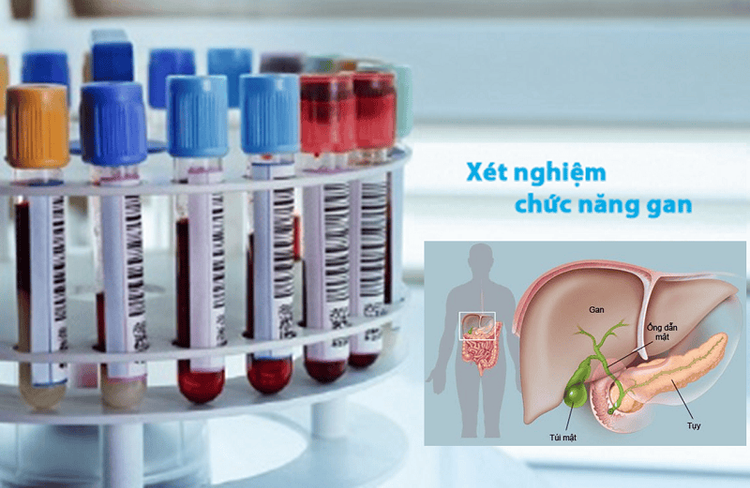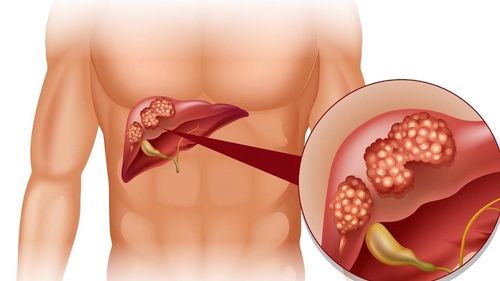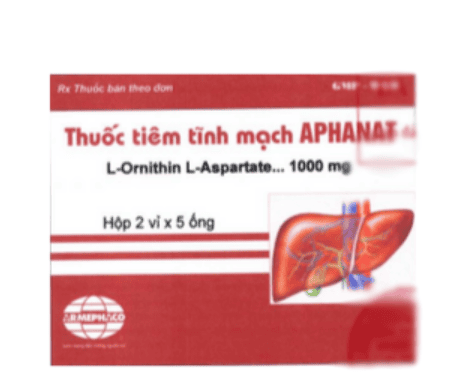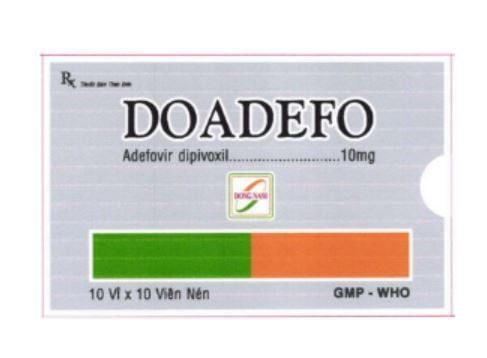This is an automatically translated article.
The article was written by Dr. Bui Xuan Truong - General Internal Medicine Department - Vinmec Times City International HospitalElevated liver enzymes is a folk concept often used in the case of liver tests, there are certain enzymes in the blood that are higher than normal. At the same time, many of us often mistake, liver enzyme test to mean liver function test. So what are liver enzymes? What does the liver enzyme index mean in liver theory? In addition to liver disease, high liver enzymes can be seen in other diseases? The following article will explain and clarify the above issues.
1. The role and function of liver enzymes
The activities of organs and organizations in the body are governed by two basic mechanisms: the nervous mechanism and the humoral mechanism. The blood flow from the heart to the body contains many different substances, especially nutrients, trace elements and oxygen. The digestive system plays a key role in the digestion and absorption of nutrients and trace elements from food, absorption takes place mainly in the small intestine. Substances, after being absorbed in the intestine, will follow the portal vein system to the liver.The liver is the largest solid organ in the body and performs many different functions. The nutrients from food, after being absorbed and brought to the liver, will be purified by the liver, converted into suitable nutrients for the body, and at the same time, the liver will eliminate harmful toxins to be eliminated from the body. body,... There are many factors that can cause liver damage, but the liver has the ability to compensate for its function quite well. There are many different types of liver tests with different units.
In daily clinical practice, routine liver testing is divided into three large groups:
Test group for liver biosynthetic function: Protein, albumin, prothrombin, alpha feto-protein, ceruloplasmin, pro -collagen III peptide,... Test group for liver detoxification and ion transport function: Bilirubin in blood, bilirubin in urine, uro-bilirubinogenuria,... Test group for evaluation of inflammatory damage, destruction of liver parenchyma : ALT, AST, alkaline phosphatase, γ-GT (gamma-GT),... So the liver enzyme test is usually understood as a test that belongs to the group that evaluates inflammatory damage and damage to liver parenchyma, not a test. liver function test. In other words, elevated liver enzymes are indicative of inflammatory damage and liver necrosis.

Xét nghiệm men gan là xét nghiệm thuộc nhóm đánh giá tổn thương viêm
Alanine Aminotransferase (ALT), another name serum glutamic-pyruvic transaminase (SGPT); and Aspartate Aminotransferase (AST), also known as serum-glutamic oxaloacetic transaminase (SGOT), belongs to the group of transaminase enzymes (also known as amino-transferases). Transaminase is an intracellular enzyme (enzyme) that catalyzes and converts the amino group (-NH2) of an amino acid into a carbonyl complex (>C=O), most commonly the keto-acid form (RCOCOOH). Transaminases are present in the cells of many different organs, in which ALT is mainly found in liver cells, in addition, it can be found in kidney and skeletal muscle cells. AST is found in liver cells, skeletal muscle cells, cardiac muscle, red blood cells, pancreas, lungs, and brain. Therefore, in addition to liver disease, ALT and AST can be elevated in a number of diseases other than liver, compared with AST, ALT is more specific in liver disease. Because ALT and AST are enzymes in cells, so when liver cells or cells of organs containing this enzyme are inflamed, destroyed, the concentration of ALT and AST in the blood will increase. ALT has a half-life of about 47h, AST has a shorter half-life of about 17h.
Note:
The normal ALT and AST concentrations in the blood are currently applied, representing only 95% of the community population. This means that 5% of people in the community do not have pathological lesions but ALT and AST levels may be higher or lower than normal. At the same time, the threshold of normal values of ALT and AST also depends on age, sex, race and body mass index (BMI). Alkaline Phosphatase (AP: Alkaline Phosphatase) belongs to the group of enzymes involved in zinc metabolism, which is evaluated as an indicator of cholestatic liver injury (intrahepatic and extrahepatic). In the liver, alkaline phosphatase is found in the bile ducts and hepatic sinusoids in the basic structural unit of the liver. In addition, alkaline phosphatase is also present in the bones, kidneys, intestines and placenta. The half-life of alkaline phosphatase is about 7 days. However, in elderly people over 60 years old, especially women, alkaline phosphatase levels are often higher than normal. People with blood type O or B, after a high-fat meal, alkaline phosphatase levels are also higher than normal due to the amount of enzymes from the intestines seeping into the blood. γ-GT (GGT: Gamma Glutamine Transpeptidase, Gamma GT) belongs to the group of membrane glyco-protein complex structures, which catalyze and convert Gamma Glutamyl groups into peptide chains, amino acids and water. Therefore, compared with many other enzymes, γ-GT has a very high sensitivity, even when new cells are damaged but not destroyed, the concentration of γ-GT in the blood has changed. This helps to explain in clinical practice, many cases of ALT and AST are normal but blood γ-GT levels are elevated and the range of γ-GT concentrations is very large. γ-GT has a half-life of approximately 20 days. γ-GT is present in the liver, including in the endothelial network of the biliary tract, kidney, pancreas, intestine, and prostate. γ-GT is also valuable for cholestasis, but is not as specific as alkaline phosphatase. The liver is an organ responsible for many important tasks in the body, including the metabolism of substances. Therefore, the liver has many different types of enzymes (enzymes) to catalyze biochemical reactions in the body. Elevated liver enzymes occurs when liver cells are damaged, especially the increase of transaminases in the blood is an indirect phenomenon indicating that there is an inflammatory process and necrosis of liver cells. In addition, other enzymes such as γ-glutamyl transferase (γ GT) and alkaline phosphatase are associated with abnormal liver secretion.
Transaminases are intracellular enzymes, usually elevated in the presence of hepatocellular injury, and include: alanine aminotransferase (ALT or GPT) and aspartate aminotransferase (AST or GOT). These enzymes are abundant in the liver and muscle. ALT is present mainly in the liver. Increased plasma ALAT levels are indicative of hepatocellular injury. Therefore, elevation of ALT is more specific for liver injury. AST is not only present in the liver but also in the heart muscle, skeletal muscle, kidney, brain, pancreas, lung, white blood cells, and red blood cells. Therefore, elevations of AST are not liver-specific because they can also be caused by abnormalities elsewhere. γ-GT is an enzyme synthesized by hepatocytes and bile duct epithelial cells. γ-GT is an indicator for cholestasis of the liver, but is less specific and may be elevated in cases such as diabetes, cholestasis, pancreatic disease, alcoholism, myocardial infarction, renal failure, and kidney disease. chronic obstructive pulmonary disease (COPD) and certain medications. Alkaline phosphate is an enzyme found in the liver, intestines, bones, kidneys, and placenta. Similar to γGT, this is a sign of cholestasis.
2. Causes of high liver enzymes
Hepatitis A, B, C, D and E viruses, in which hepatitis B and C viruses are both capable of causing acute and chronic hepatitis. In particular, Vietnam is in the epidemic area of chronic hepatitis B virus infection of the world (chronic hepatitis B virus infection rate 8% of the population), with the main route of transmission being from mother to child. Hepatitis B is the leading cause of cirrhosis and liver cancer in Vietnam. Hepatitis B, C, and HIV are similar viruses that are transmitted through blood and body fluids: Unscreened blood and blood product transfusions, unsafe sex, sharing needles and syringes, and instruments that cause bleeding such as tattoos, razors, ... occupational accidents in the medical field.
Alcoholic liver disease, especially traditional cooking wine, often does not have a qualified filtration system to remove impurities and toxins, in addition to the pathology that damages the liver, alcohol also damages other organs: Stomach, heart vascular, neurological, diabetes, respiratory,... Alcoholic liver damage has elevated blood levels of γ-GT, AST, ALT and the AST/ALT ratio is usually ≥2.0.

Rượu bia là nguyên nhân chính khiến men gan cao
Hepatitis B, C and alcohol are the 3 leading causes of chronic hepatitis, cirrhosis and liver cancer worldwide
Non-alcoholic fatty liver damage (NAFLD: Non-Alcoholic Fatty Liver) Disease, NASH: Non-Alcoholic Steato-Hepatitis) is now considered a pathology, in terms of the current pathogenesis, there are still many points that have not been fully explained. Along with modern life, diseases tend to increase more and more. Restricted exercise, obesity, improper nutrition, diabetes, chronic respiratory disease, ... are considered favorable factors of the disease. Toxic hepatitis, drug-induced hepatitis: There are many substances and drugs, including many traditional medicine, that can cause hepatitis. Recently, many medical studies and many medical scientists have warned that hepatitis caused by functional foods tends to increase along with the increase in the use of functional foods in society. Drug-induced hepatitis, along with liver treatment, the first thing to do is to stop using drugs and functional foods. Biliary disease: Cholelithiasis, biliary tract infection, biliary cyst, cholangiocarcinoma. Cardiovascular, respiratory, and skeletal muscle diseases: Right heart failure, total heart failure, cardiomyopathy, myocardial infarction, bronchospasm, chronic obstructive pulmonary disease (COPD), Budd- syndrome Chiari. Diseases that cause damage to skeletal muscle or due to excessive physical activity can also cause elevated liver enzymes. Other bacterial, parasitic and viral infections: Liver flukes, amoeba (usually causing liver abscesses, and with elevated γ-GT, alkaline phosphatase), syphilis, HIV immunodeficiency virus, Herpes virus, Estein-Barr virus, Cytomegalo virus, Dengue virus (dengue fever). Autoimmune diseases: Autoimmune hepatitis, Primary Biliary Cirrhosis (PBC), Primary Sclerosing Cholangitis (PSC). Metabolic disorders: Copper metabolism disorders (Wilson's disease), iron metabolism disorders, alpha 1- antitrypsin deficiency, glycogen metabolism disorders, tyrosine metabolism disorders, porphyrias, disorders of metabolism. sugar metabolism (fructose, galactose),... In general, in addition to liver damage, depending on the specific cause, there are damage to many other organs: brain, heart, skin, bones, joints, etc. kidney, ... and many metabolic disorders are related to genetic factors. Other diseases: Hemolysis, prolonged anemia, sarcoidosis, malnutrition,... Alcoholic liver disease: Usually based on history of chronic alcoholism, AST/ALT test >2, often accompanied by elevated γ-GT . Blood cell analysis usually detects an increased erythrocyte volume (MCV) due to folic acid deficiency. Hepatitis B and C are the two most common types of hepatitis: History of drug use, tattooing, injection drug use, multiple sex partners, blood transfusion. Fatty liver disease (NASH): Common in patients with obesity, diabetes, dyslipidemia. Drug-induced hepatitis: History of using some drugs suspected to be toxic to the liver, even herbs, traditional medicines, functional foods. It is necessary to discontinue the drug and receive supportive treatment to wait for recovery. Wilson's disease is an inherited disease caused by accumulation of copper in the body, manifested by damage to the liver (cirrhosis), brain (extrapyramidal disorder), kidneys, red blood cells (hemolysis) and the appearance of Kayser-Fleischer rings. in the eye. Autoimmune liver disease: Common in women, accompanied by lesions in the skin, joints, and kidneys. Myopathy: Usually due to heavy exercise, painful swelling, muscle weakness, or use of certain drugs that cause rhabdomyolysis. Hemolysis: Anemia with AST>ALT, decreased Hb, increased reticulocytes, haptoglobin (+), Coomb's test (+). α1-antitrypsin deficiency: Pediatric patients with persistent obstructive jaundice, family or personal history of emphysema in young adults.
Please dial HOTLINE for more information or register for an appointment HERE. Download MyVinmec app to make appointments faster and to manage your bookings easily.













